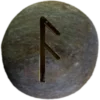Last Updated on October 10, 2024

A kenning is a poetic device used in Norse mythology, particularly within the Eddas. They describe objects, people, or concepts in a more imaginative way. It replaces a simple noun with a compound phrase, giving the reader or listener a deeper, more vivid image. These phrases typically use metaphor or allusion. They draw from nature, myth, or everyday life. In this way, kennings add depth to storytelling and poetry, allowing the audience to engage with the language in a creative way.
For example, instead of saying “the sea,” Norse poets would use the kenning “whale-road.” This phrase evokes imagery of the ocean as a path for whales, giving a richer and more mythical sense to the description. Kennings were common in skaldic poetry, where the poets, or skalds, crafted intricate wordplay to celebrate heroes or tell stories of the gods. These kennings require a solid understanding of mythology, as many allusions involved gods, heroes, or mythical events.
Kennings in the Eddas
In the Poetic Edda and Prose Edda, kennings play a significant role in preserving the culture and mythology of the Norse people. The Eddas, collections of Old Norse poems and stories, use kennings to convey complex ideas and themes. They act as a bridge between the mundane and the mystical, bringing the mythological world into everyday language.
One famous kenning from the Eddas is “battle-sweat,” which means blood. This phrase emphasizes the effort and violence of battle, giving a heroic and poetic twist to something as simple as bloodshed. Another example is “Ymir’s skull” for the sky, referencing the myth of the giant Ymir whose skull became the heavens.
Through kennings, the Norse people preserved their history and beliefs in an artful, symbolic way. These expressions make reading the Eddas a richer experience. They offer insights into how the Norse viewed their world and their gods.


